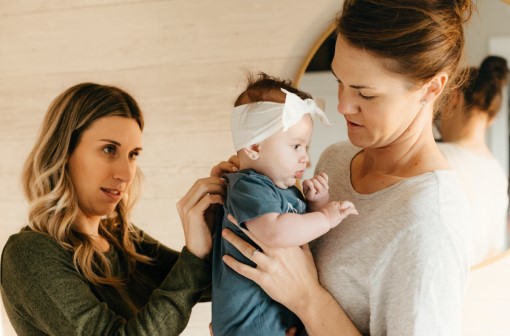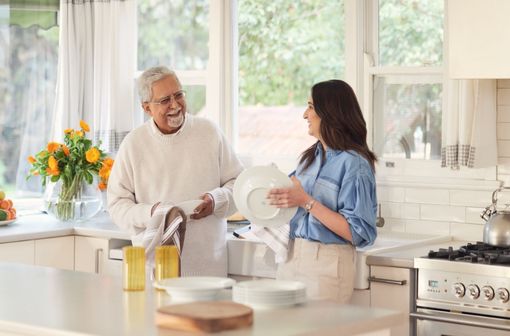“When you’re investing your time and skill in an area that you’re passionate about, or advocate for, you generally get higher levels of satisfaction.”—Grace Singh, General Manager of Community, Wellbeing and Safety at Australian Unity.
Key points
- Australian Unity Wellbeing Index data shows that people who see volunteering as their greatest source of personal achievement have higher wellbeing levels.
- Volunteering forges a sense of belonging that is essential for our wellbeing.
- Research shows the average volunteer is female, in a relationship and aged 60.
Each year across Australia, nearly six million volunteers contribute over 596 million hours to charities and community organisations*.
Just as many of us volunteer informally, taking care of essentials such as transport and domestic work for our community.
If you look closely at the benefits of volunteering you’ll understand why so many of us are happy to roll up our sleeves.

A little goes a long way
Whether people who volunteer have higher wellbeing, or people with greater wellbeing are more likely to volunteer, there’s a strong connection between wellbeing and volunteering.
Indeed, Australian Unity Wellbeing Index data shows that people who see volunteering as their greatest source of personal achievement have higher wellbeing levels than people who nominate other sources of personal achievement—and, in fact, they have wellbeing scores above the average range.
You don’t need to spend a lot of time volunteering to reap the benefits either, with our research consistently showing that part-time volunteers report wellbeing above the average range across all wellbeing domains.
“It’s about time well spent,” says Grace Singh, General Manager of Community, Wellbeing and Safety at Australian Unity.
“Volunteering is about ‘I have, or I want to make the time, where would it add most value and contribute to the community?’”
Creating a sense of purpose
Volunteering has long been associated with a strong sense of purpose, so it’s unsurprising that both full- and part-time volunteers outscore the general Australian population when it comes to the domain of achieving in life.
While Australians’ rating for achieving in life sat at 72.4 in 2020, full-time volunteers scored 74.2 and part-time volunteers scored 76, above the average range for the achieving in life domain.
For Grace, the connection between volunteering and a sense of purpose is a natural one. “When you’re investing your time and skill in an area that you’re passionate about, or advocate for, you generally get higher levels of satisfaction that contribute to your overall wellbeing,” she says.
It’s all about community
Volunteering forges connections and community, and this sense of belonging is essential for our wellbeing, explains Christian Stenta, Manager of Social Change at the Australian Red Cross, an Australian Unity community partner.
“Communities with higher levels of volunteering display higher levels of belonging, as well as higher levels of trust, less crime, and the ability to be able to collectively respond to challenges and needs in the community.”
In fact, our research shows that while the average range for satisfaction with community connection tops out at 73.4, both full-time volunteers (78.2) and part-time volunteers (78.3) significantly outscore that mark.
Who are our volunteers?
According to Australian Unity Wellbeing Index data, the average volunteer is female, in a relationship and aged 60. Women may receive a greater boost to their wellbeing from volunteering than men.
Female volunteers also have the highest wellbeing scores of any occupation status. But Grace is unsure whether the appeal of volunteering is a gender trait or a personality trait. “Anyone can volunteer. At the end of the day, it’s often about providing your personal value and making a contribution.”
Christian also points to the variety of motivations among volunteers. “People might choose to volunteer to develop specific skills. Sometimes they’re looking for a particular employment experience. But a lot of people volunteer because it’s a way to express things that matter to them that they might not be able to do through their paid employment.”
Whether it’s a day a week for a charity, a few hours a month at your local sports club or mowing the lawn for your elderly neighbour, volunteering feels good—and that’s a great reason to lend a hand.
*"Key Volunteering Statistics: January 2021", Volunteering Australia








